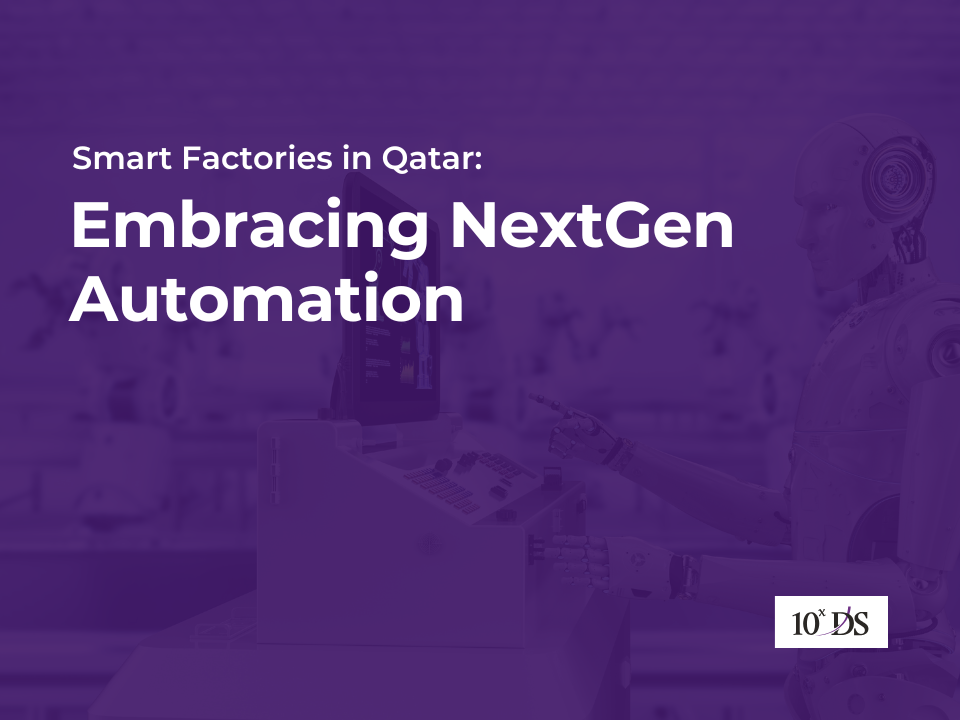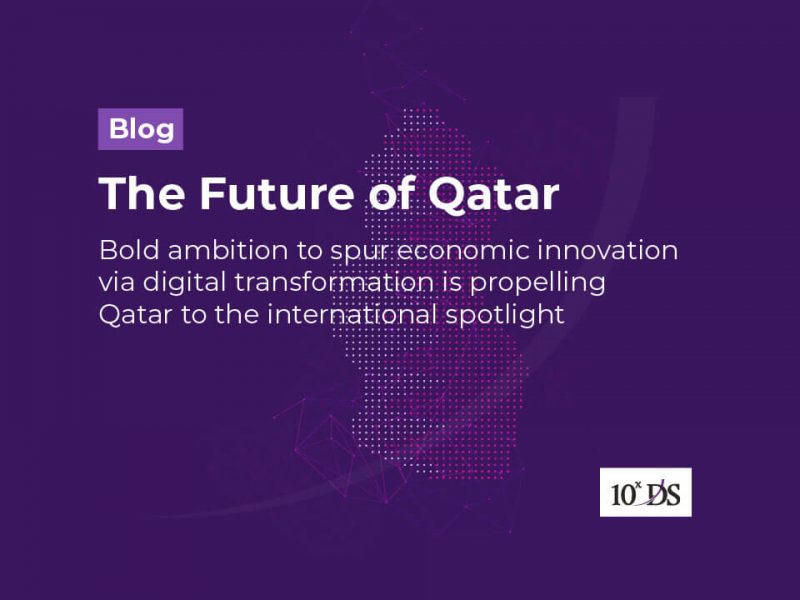
Smart Factories in Qatar: Embracing NextGen Automation
As Qatar accelerates its economic diversification away from hydrocarbon reliance—with a bold vision toward knowledge-based industries—the transformation of its manufacturing sector has never been more urgent. Smart factories powered by agentic process automation present a compelling opportunity. Through intelligent systems capable of autonomous decision-making and optimization, Qatar can leap ahead to global competitiveness. In this blog, we explore what smart factories mean, how agentic process automation works, and which automation solutions for Qatar industries should consider.
1. What Is a Smart Factory?
A “smart factory” integrates advanced technologies—IoT sensors, robotics, AI/ML, digital twins, augmented reality, and real-time analytics—into a cohesive ecosystem. Rather than disparate automation, systems collaborate and learn from data, autonomously adjusting operations, diagnosing issues, and improving over time. This new factory paradigm offers:
- Increased throughput through predictive scheduling
- Reduced downtime via self-healing and alert-based maintenance
- Energy optimization powered by live usage data
- Faster product adaptation, with digital twins modeling changes virtually before real-world deployment
For Qatar, this transition aligns with Qatar National Vision 2030, which emphasizes innovation, sustainability, and global competitiveness.
2. Agentic Process Automation: The Brain Behind the Factory
At the heart of a smart factory lies agentic process automation (APA)—a shift from rule-based control to autonomous decision systems. Let’s break down APA:
- Agents
These are intelligent agents: modular software/hardware entities that can sense, decide, act, and learn—each assigned a function (e.g., quality control, supply stock, energy usage). - Process automation
Workflows are automated end-to-end. From raw material intake, through production, packing, to logistics, everything is managed seamlessly. - Agentic orchestration
Agents coordinate via decentralized protocols. If a packaging robot sees a defect, it instructs the quality control vision system to verify; if a storm delays supply, a procurement agent reroutes shipments. - Continuous learning
AI models ingest data across agents, learning patterns, predicting demand, and improving scheduling without manual configuration.
By enabling self-direction, APA makes smart factories adaptive and resilient—especially crucial for Qatar’s environment, where supply chains can be affected by regional logistics challenges.
Automating Qatar’s Key Industries
Petrochemical & Refining
Qatar’s petrochemical giants can deploy sensor-laden pipelines that feed real-time data into distributed agent networks. APA systems can detect pressure anomalies or chemical imbalances, activating maintenance robots or rerouting flows automatically. Automation solutions for Qatar in petrochemicals reduce risk, maximize uptime, and enhance worker safety.
Food & Beverage Manufacturing
Climate-controlled storage, cleanroom packaging, and just-in-time delivery are vital in Qatar’s hot climate. APA systems intelligently balance refrigeration load, production rate, and delivery schedules. For instance, if a cooling unit shows unusual power spikes, an agent can reroute products to another cold-chain line without halting the entire line. That’s the power of automation solutions for Qatar to improve freshness, reduce waste, and ensure compliance with Gulf standards.
Construction Materials
Cement, prefabricated panels, and steel production benefit from automated batching and milling. Agents can modulate mix ratios, track energy use, and coordinate logistics around fluctuating demand. The result? Improved product consistency and reduced cost—all while meeting Qatar’s infrastructure goals.
Infrastructure Readiness & Edge Deployment
Qatar has already invested heavily in 5G and fiber-optic networks. These enable ultralow latency communications—critical when agent networks must exchange real-time data across factories or logistics hubs. The typical architecture:
- Edge computing units aggregate sensor data locally, filtering noise before updating agents
- Central AI servers (cloud or private) run global models to optimize fleet-level resource allocation
- Mechatronic agents act locally (e.g., adjusting weld timing on a robotic arm at a Qatar facility)
These systems require orchestration software, agent middleware, and cybersecure connectivity. Here again, tailored automation solutions for Qatar will thrive—because they must satisfy Qatar’s regulatory environment, climate resilience needs, and multilingual workforce.
Overcoming Key Challenges
Workforce Training & Change Management
APA heralds a change in roles. Traditional operators become “agent supervisors” or “data lead technicians.” Upskilling Qatar’s local workforce—via vocational programs, university curricula, and public-private partnerships—is essential. The right automation solutions for Qatar include built-in training modules and operator-friendly interfaces to ease adoption.
CyberPhysical Security
With hundreds of connected agents controlling plant equipment, robust cybersecurity is mandatory. Each agent should include identity verification, encrypted communications, and autoupdates to patch vulnerabilities. Vendors offering APA systems must comply with local dataprivacy laws and incorporate Qatar standard security protocols.
Integration with Legacy Systems
Many Qatar factories already use SCADA, MES, or basic robotics. Transitioning to APA calls for a hybrid approach: wrap legacy systems with adapter agents, build digital twins for simulation, and migrate gradually without halting operations. This hybrid strategy minimizes risk while leveraging existing infrastructure.
Steps to Start APA & Smart Factory Journey
- Assess and prioritize: Identify high-impact lines or processes (e.g., those with frequent downtime or energy peaks).
- Pilot – run one smart line: Install sensors, deploy a few agents (e.g., energy management, predictive maintenance).
- Adapt and learn: Monitor performance, tweak agent logic, refine staff roles and governance.
- Scale gradually: Expand to other lines or facilities, building a network of agents across the supply chain and site.
- Evolve to enterprise APA: Connect across sites, integrate supplier and customer data, activate higher-order adaptive intelligence.
Partners, Ecosystem & the Road Ahead
Realizing APA requires collaboration between local and global players:
- Qatar-based integrators & systems houses who know local rules
- Global APA technology providers who offer agent orchestration platforms
- Universities & training institutes for vocational skill building
- Standards bodies like Qatar General Organization for Standards & Metrology for compliance
- Innovation hubs in Education City and Qatar Science & Technology Park to pilot prototypes
With Smart Qatar 2030 in mind, APA provides a tangible path to elevate local manufacturing—reducing foreign dependency, creating high-skilled jobs, and building national capability in Industry 4.0.
Conclusion
Smart factories powered by agentic process automation represent a transformative opportunity for Qatar. They promise autonomy, resilience, and productivity—and they’re not just lofty theory but commercial reality, deployable today.
By embracing automation solutions for Qatar, manufacturers across petrochemicals, FMCG, construction, and beyond can unlock concrete benefits: lower costs, higher quality, optimized energy use, and better-trained human capital. The journey requires strategy: prioritize carefully, pilot smart systems, invest in workforce, and partner locally and globally.
If your organization is ready to explore smart manufacturing, start small, think big, and engage ecosystem partners early. The future of Qatar’s industry is not just smart—it’s agentic, adaptive, and world-class. Talk to our experts today for a Digital Transformation for Qatar-based industries.

